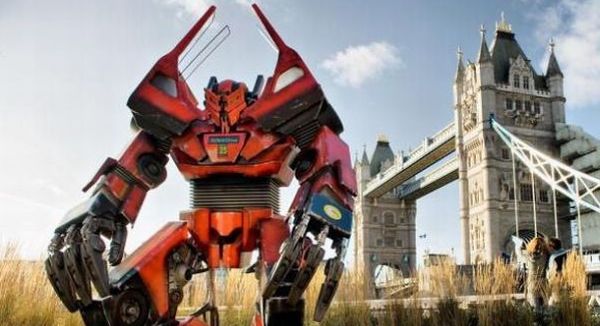
Several environmental groups claim that informal processing of electronic waste in developing countries causes serious health and pollution problems. Some electronic scrap components, such as CRTs, contain contaminants such as lead, cadmium, beryllium, mercury and other toxins. The problem of electronic waste is on a rise and some designers aren’t just waiting for others to develop safe recycling solutions as they’re trying to reuse scrap electronic components in their original shape to create new artwork that can be displayed. Here is list of some of the most striking examples of artwork created from recycled electronics:
E-waste Sneakers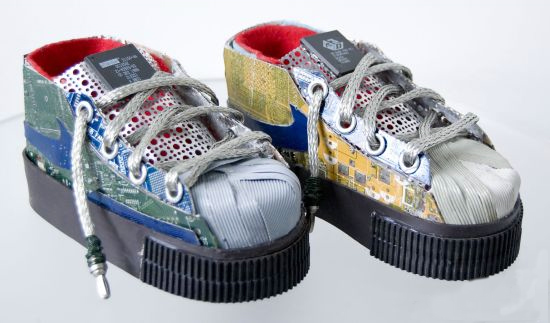
The E-waste Sneakers by American artist Gabriel Dishaw are created entirely from electronic waste. The designer has followed a different approach by selecting two colors for each side of the shoe and incorporated a great blue color pop for the swoosh and other ascents.
Recycled CD chair
Designed by Belen Hermosa, the Recycled CD chair might not be the most comfortable chair you’ve ever sat on, but it does help the environment by saving hundreds of unwanted discs from reaching the landfills.
Brenda Guyton’s e-waste sculptures
Industrial designer Brenda Guyton breathes new life into old chips and PCBs by converting them into unique works of art. The sculptures illustrate the fusion of biological life and machine life. Working from her garage-turned-studio, Brenda is assisted by her husband too. Most of the material is supplied by her good friends.
Neyland Stadium Replica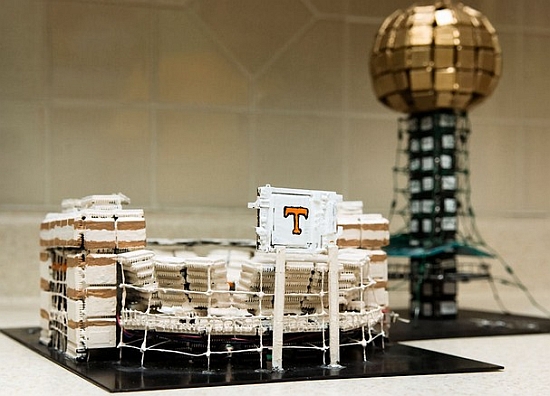
Eco-minded artist Dace Mann created a small scale replica of Neyland Stadium and the Sunsphere from pieces of electronic parts he and his friends collected. The replica is 8-inches wide, 10-inches long and soars about 4-inches into the sky. The stadium consists of around 250 ICs that were painted white and then glued to create rows and skyboxes. The Jumbtron was once a cellphone’s display screen and the field is actually sandpaper that is painted green.
Arnold Advertising’s e-waste billboard
Installed on Highway 101 in the Silicon Valley, San Jose, California, this billboard by Arnold Advertising has been created from recycled computer monitors and other electronic components. The billboard showcases some eleven 3-dimensional and eight-foot high letters.
WEEE Man
Created by the British Royal Society of Arts, the WEEE Man weighs 3.3 tons and stands at the Eden Project in Cornwall. The structure has been created using scrap monitors and other electronic scrap.
Giant Cellphone Sculpture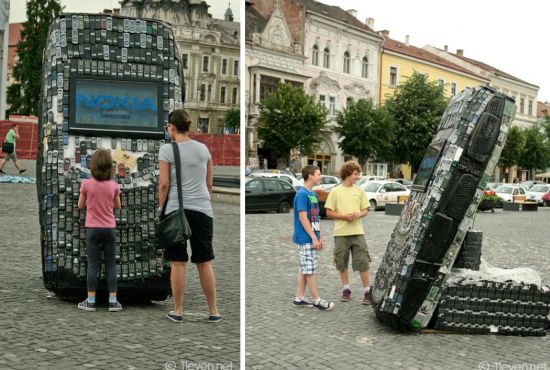
Eco-conscious artists in Romania created this giant cellphone sculpture that now stands at the Planet Report Environmental & Film Festival. The structure has been created using hundreds of discarded cellphones.
Discarded Cellphone Installation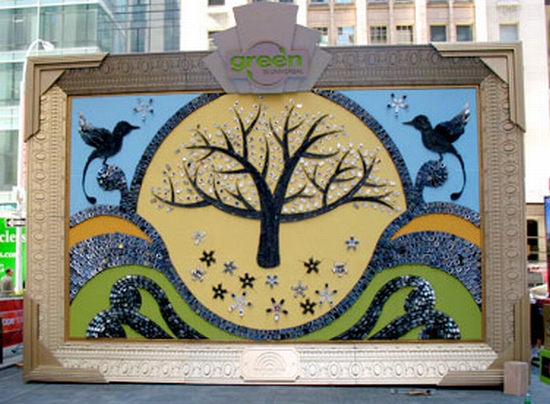
Created by eco-artist Nigel Sielegar, this 18’ high and 24’ wide frame, uses hundreds ofcellphones to give it desired shape. The installation tries to inform consumers that cellphones carry toxic materials in their batteries, which if left untreated can pose a serious threat to the ecosystem.
Biological Virus Sculptures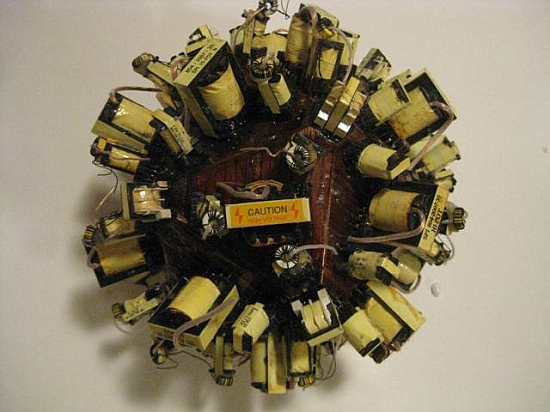
Artist Forrest McCluer salvaged 30 computers from a garbage pile outside an office building and converted all that junk into art. The artwork consists of sculptures of biological viruses from common cold to rhinovirus, the artist has designed them all from capacitors and other electronic component in the salvaged computers.
Sci-fi Masks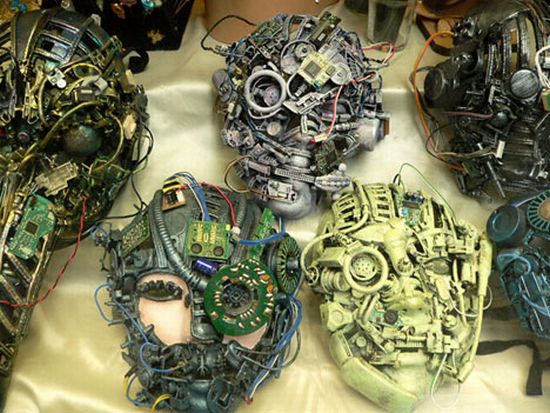
These creepy looking sci-fi masks have been created using random electronic waste lying around someone’s house.
Macintosh II Couch
This couch was displayed at the Mac Store in Maryland Heights, Missouri. The couch consists of 20 obsolete Macintosh II computers and since the computers were designed to carry heavy 20-inch monitors on top of them, it would be strong enough to hold you for a nap.
Inland CD Sea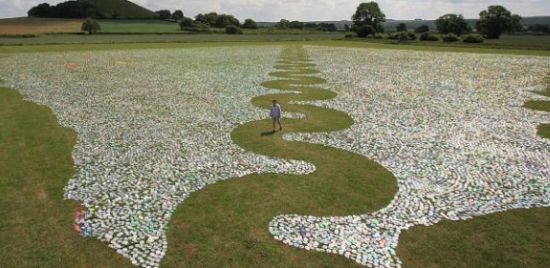
Created from about one million unwanted compact discs, this shimmering inland sea installation is the brainchild of artist Bruce Murno. The installation rests at Long Knoll Field in Wiltshire, England. Apart from some local collections, the massive sea used more than 600,000 discarded CDs that were sent from as far away as Brazil and California.




